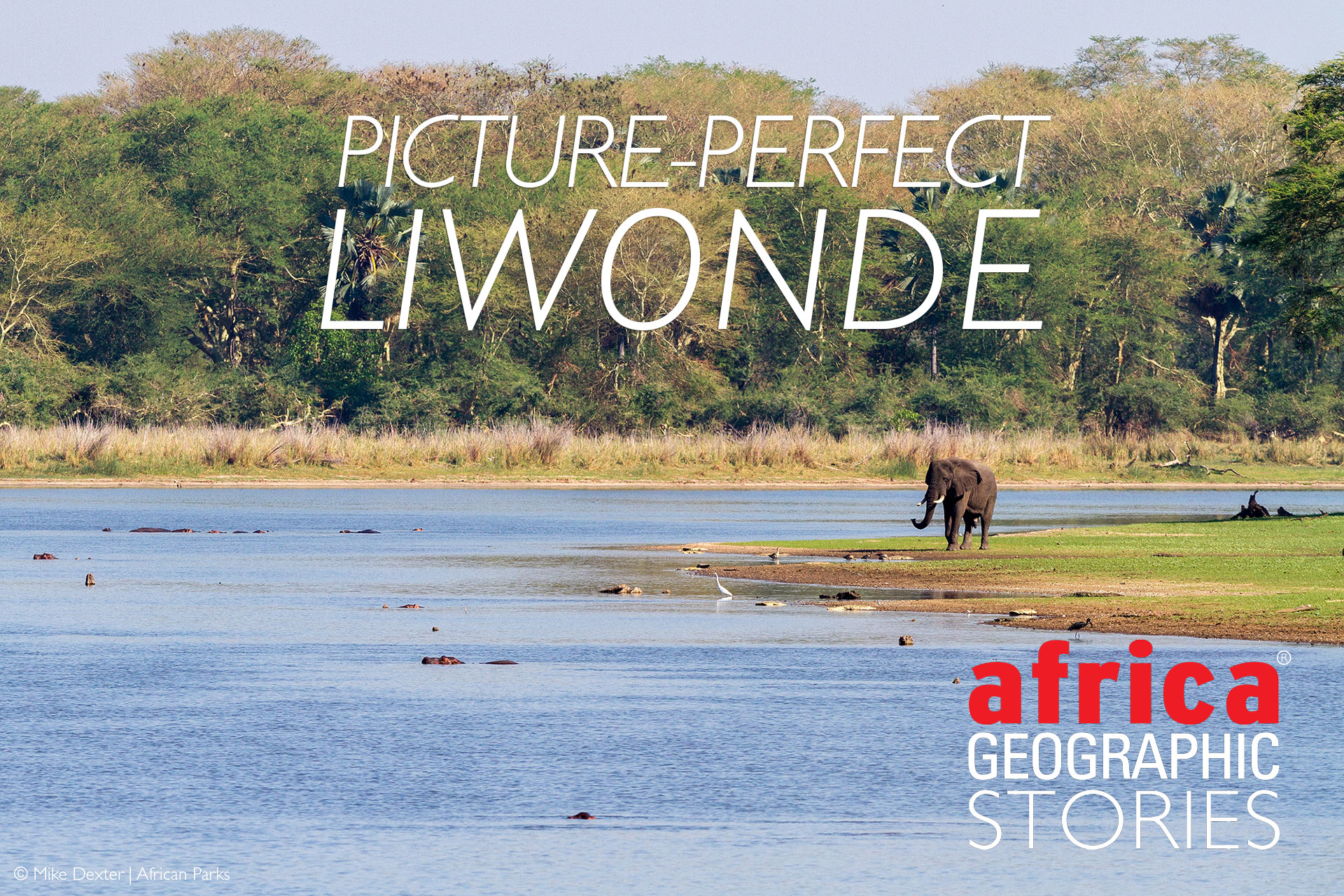
KINGSLEY HOLGATE'S AFRIKA ODYSSEY EXPEDITION


It’s Day 85 of this Afrika Odyssey expedition. We’re now feeling the pace, as we hug the shores of Lake Malawi to reach Liwonde National Park, the seventh park of the southern Africa chapter of our trip. Jack Johnson’s moody Times like these plays over the Defender sound system – so much memory-lane stuff swirling around in our heads. Today, Lake Malawi is as calm as a millpond, but it isn’t always so.
Ross’s voice comes over the radio: “Remember when we were hit by that storm going across the lake?” He’s referring to our dangerous 14-hour crossing of Lake Malawi during a previous expedition to track the entire length of the Great African Rift Valley. It had been a nightmare of bailing and throwing up, as the captain of the hopelessly overloaded wooden dhow (he’d taken on too many passengers, some of them mums with tiny babies – very reckless) struggled with only a small outboard to keep the boat’s prow into the wind, as massive waves threatened to capsize us. An argument had broken out – some of the passengers wanted to turn back. “Masadandaule – be calm, don’t complain!” the captain had urged. He knew that if we turned, the boat could broach and that would be the end.
“Never ever!” had shouted Shova Mike, our expedition mountain biking veteran, as we jumped ashore in the dark and staggered onto a baobab-ringed beach on Likoma Island. Pulling on an imaginary cigar and putting on a posh accent, he’d intoned, “Never ever, in the history of this vast inland sea, have so many seasick passengers been pushed by so few horsepower, across such dangerous waters!”
Renowned African explorer Kingsley Holgate and his expedition team from the Kingsley Holgate Foundation recently set off on the Afrika Odyssey expedition – an 18-month journey through 12 African countries to connect 22 national parks managed by African Parks. The expedition’s journey of purpose is to raise awareness about conservation, highlight the importance of national parks and the work done by African Parks, and provide support to local communities. Follow the journey: see stories and more info from the Afrika Odyssey expedition here.
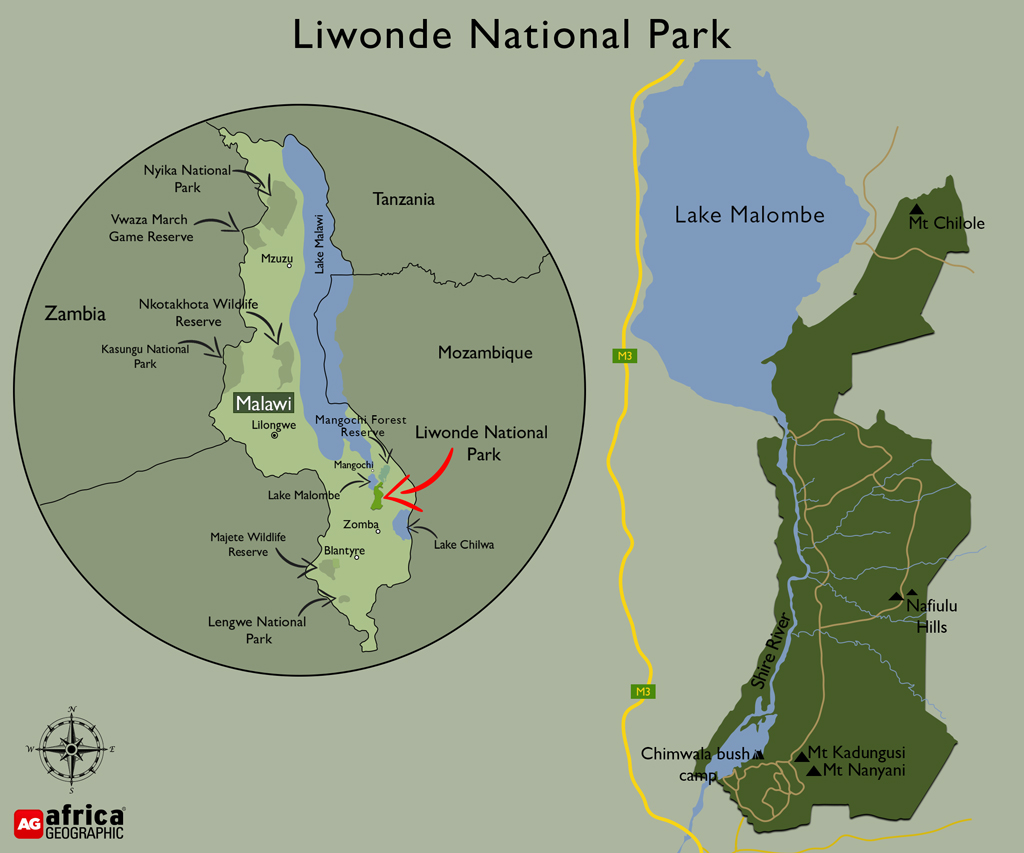
That journey had taken us all the way down Lake Malawi and Lake Malombe to the Shire River, Liwonde National Park’s lifeline, and beyond. Now, ten years on, we’re back and Liwonde is even better. The birdlife is unbelievable, and buffalo, sable antelope and dusty elephant herds come down to the river to drink. Pods of hippos everywhere, waterbuck galore and fantastic lion sightings.
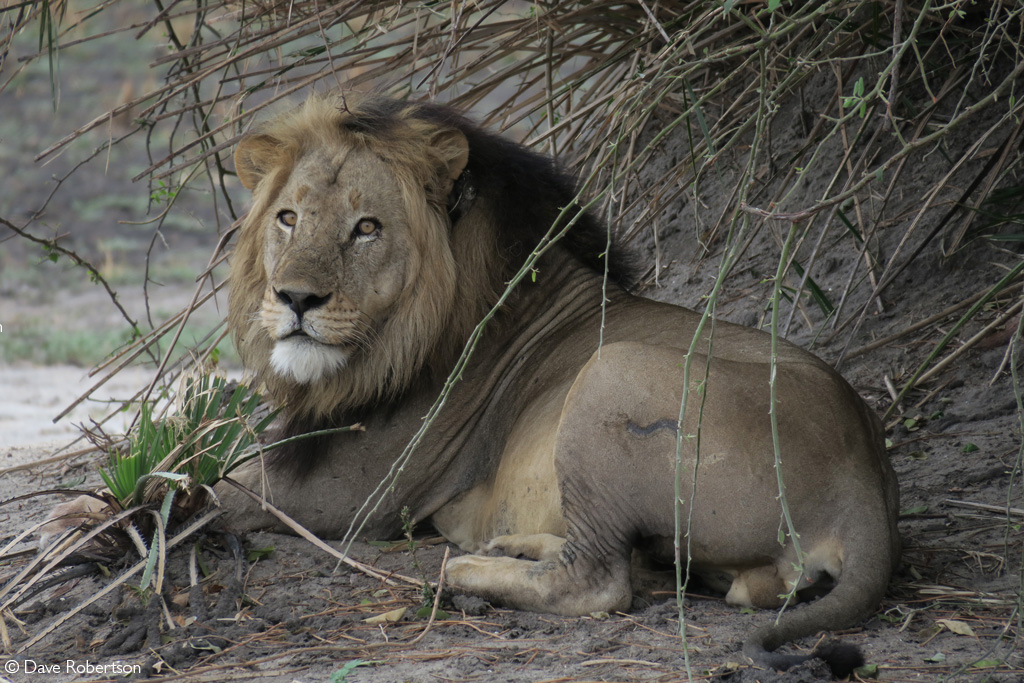
It’s great to reconnect with park manager Dave Robertson and his wife Erica, who we know from their days in Zululand. Together with their Liwonde team, we gather for welcome sundowners on the banks of the Shire, which, thanks to Cyclone Freddy’s double deluge, has become a lake.
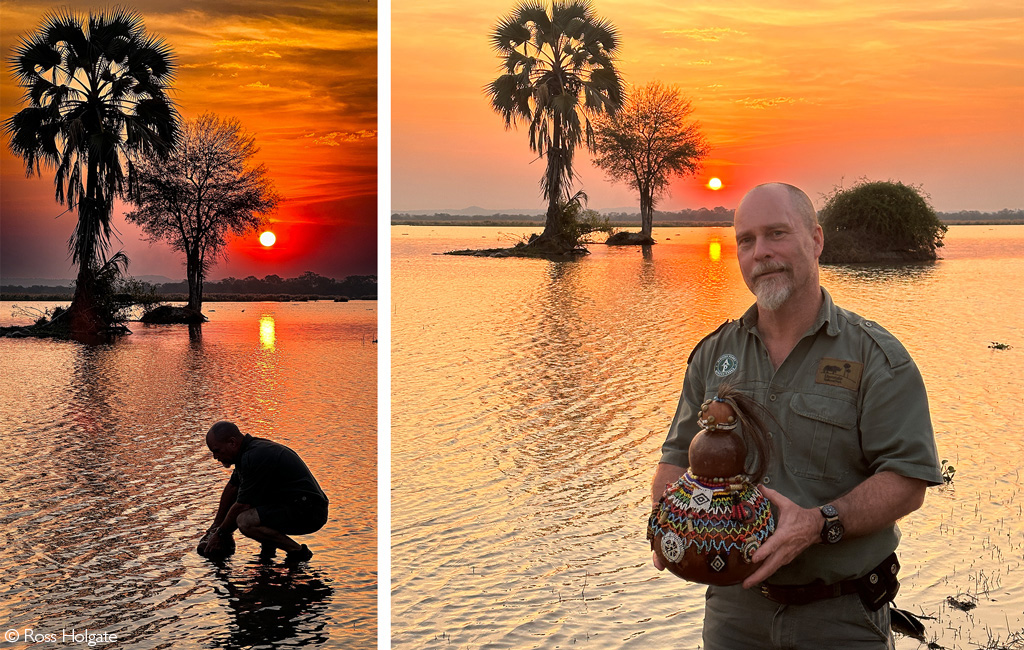

It’s time again for the calabash ceremony, and Dave wades into shallows. We couldn’t have asked for a more magnificent scene; the sun setting behind tall Borassus palms, a fat full moon rising over the Chinguni Hills, hippos grunting and a small herd of elephants swimming across the river. It proves to be one of the most iconic images of the expedition thus far.
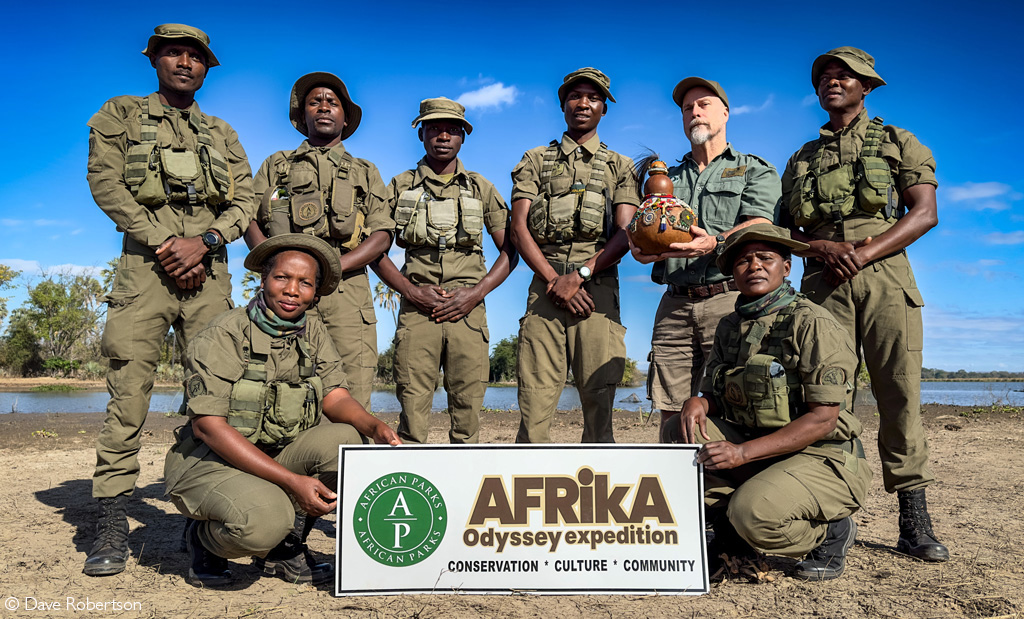
It is a picture-perfect postcard of a park, and once again, we’re reminded that thanks to African Parks and the Malawi government, Liwonde has been pulled back from the brink of destruction to become the Big 5 success it now is. Over the past seven years, cheetah, lion and wild dog have been reintroduced, along with critically endangered black rhino in one of the largest international translocations in history. Fish stocks in the park’s 30km stretch of the Shire River are increasing rapidly and, with the return of predators, vultures have made a welcome comeback. Liwonde has now become the source for major wildlife relocations. Not only for some of the 500 elephants that went to Nkhotakota, but numerous other species have also been moved to other Malawian parks from Nkhotakota.
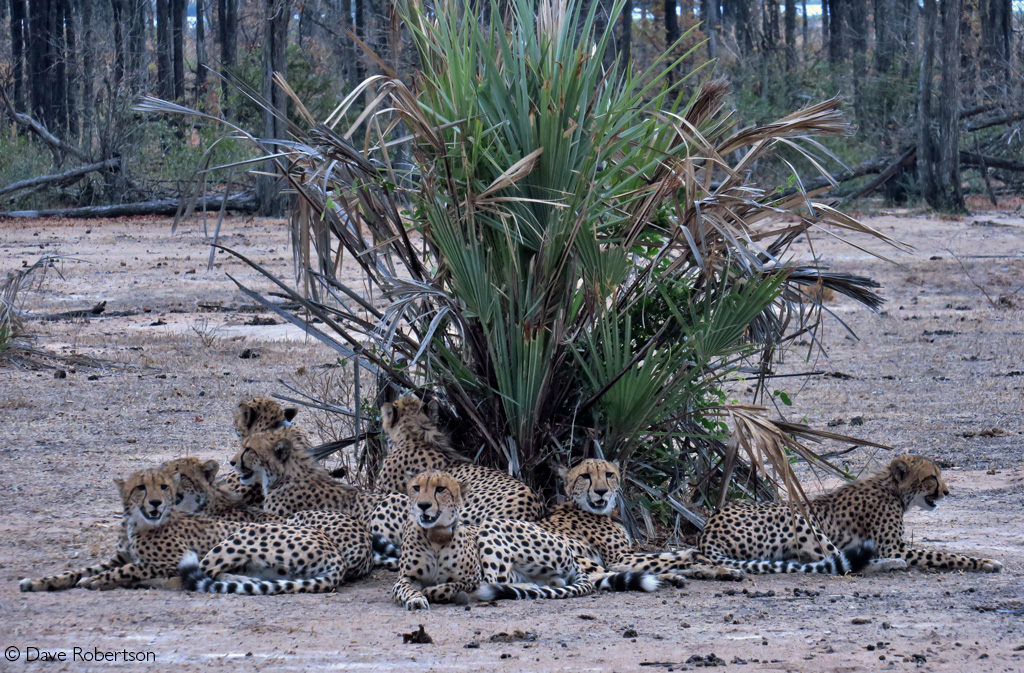
It’s always great to get stories from the people on the ground. High-spirited field guide Nelson Chikwewa tells us that, when he was a boy, the elephants were always breaking out, there was terrible human-wildlife conflict, poachers were doing as they pleased (even coming in from Mozambique with guns), and elephant poaching was rampant. With Nelson at the wheel, we meander through large glades of tall cathedral mopanes and gnarled, grey baobabs. We pass an armed ranger on a motorbike. “Since African Parks took over in August 2015, there’s been proper law enforcement. Mr Lawrence, our field operations manager, and his team are doing an excellent job,” says Nelson with a big grin. “Over 50,000 snares have been removed, and they have controlled the poaching. We must be one of the best parks in Africa now!”
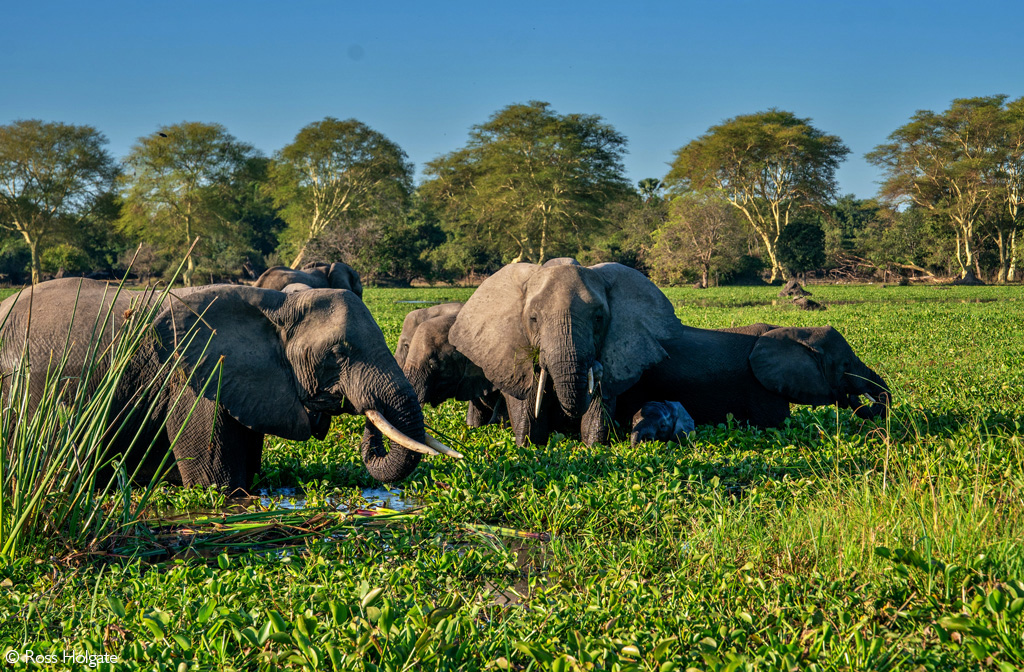

We smile knowingly. Lawrence Munro is an old friend. He and I worked together for years fighting rhino poaching and jointly started the Zululand Anti-Poaching Airwing. He’s still greatly admired in Zululand; undoubtedly, African Parks attracts the best people.
 DID YOU KNOW that African Parks offers safari lodges and campsites where 100% of tourism revenue goes to conservation and local communities? You can plan and book your African Parks safari to Liwonde National Park and other parks by clicking here.
DID YOU KNOW that African Parks offers safari lodges and campsites where 100% of tourism revenue goes to conservation and local communities? You can plan and book your African Parks safari to Liwonde National Park and other parks by clicking here.
As Lawrence is on leave, we feel a practical joke is in order – expeditions are fuelled by good humour. He’s known as a stickler for military-style neatness, with everything precisely in its place. So, with Dave and Erica as willing co-conspirators, we shoot a video clip of Sheelagh, unrecognisable in a ranger’s gilly suit, apple-pieing Lawrence’s immaculate office! We all get the giggles imagining Lawrence’s horrified expression when he sees the video of some camouflaged stranger sitting at his messed-up desk. (A couple of weeks later, Sheelagh gets a two-word WhatsApp: ‘You Rat!’)

Over a million people live around Liwonde and, as with the other African Parks-managed wildlife reserves we’ve visited, the dedication to their neighbours is inspiring. With community manager Matias Elisa at the helm, we first visit the park’s environmental education centre for conservation work with kids. The park has established 94 wildlife clubs and literacy programmes in the surrounding schools, and children are regularly transported in the Liwonde game-viewing bus to spend fun-filled educational days at kids’ camps, as well as game drives with Liwonde guides. There’s a hugely popular Chipembere (rhino) Football League, a ‘Goat Pass On’ project that provides extra protein to families, monthly Umuganda community clean-up days, and busy irrigation schemes that grow acres of vegetables. Thousands of wood-efficient stoves have been distributed to reduce wood and charcoal consumption. The Spicy Farmers chilli growing project has also been a major success, resulting in a big drop in elephant breakouts.
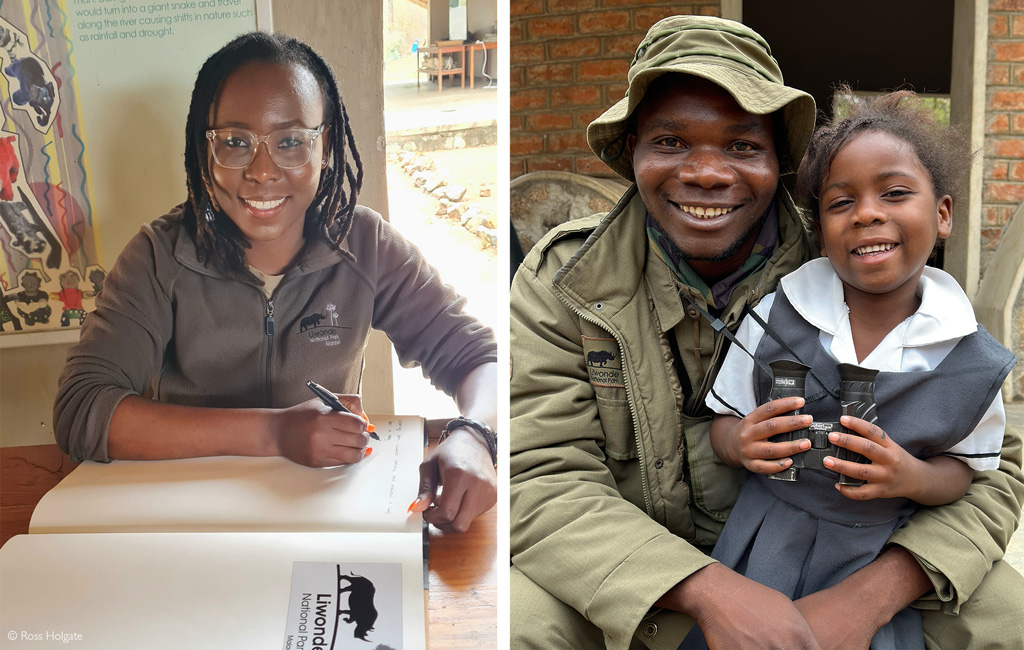
Our visit is not just about Liwonde, though. Dave says that in 2018, the Malawian government extended African Parks’ mandate to include the adjoining Mangochi Forest Reserve, so increasing the park’s footprint by 60%. There’s no direct link road yet, so it’s a long drive that loops north, close to the Mozambique border. En route to Mangochi, we stop at the park’s Honey with Heart project, where we meet beaming Clement Mnandi and his team. “Beekeeping is an alternative to poaching, charcoal, firewood and logging. This project empowers 580 beekeepers and benefits 3,500 households,” Clement tells us proudly. McCormick Phiri, one of the beekeepers, says he’s done well enough to buy a new motorbike and Anafi Mdala is, despite a clubfoot, one of the best honey producers. It certainly takes ‘heart’.
 Considering Liwonde for your next African safari? Read more about a safari to Liwonde NP here, or check out our ready-made safaris here.
Considering Liwonde for your next African safari? Read more about a safari to Liwonde NP here, or check out our ready-made safaris here.
We’re joined by Meiring Smit, Mangochi’s young and energetic field operations manager, who’s done a great job of constructing a new ranger camp, airstrip and office. Meiring and a small team were also responsible for building plank bridges and cutting a steep, sinuous 4×4 track by hand to the top of Mangochi Mountain. In first and second gear, we growl and wind upwards through the pristine forests to reach the ruins of Fort Mangochi. “Your Defender is the first ever to reach this point,” Meiring says as, under the fort’s imposing walls, we munch a tailgate lunch of Erica’s home-baked bread and leftover nyama from the jolly braai of the night before. The fort’s strategic and picturesque location on the mountaintop offers breathtaking views of Mangochi’s valleys and plains that stretch towards Mozambique.
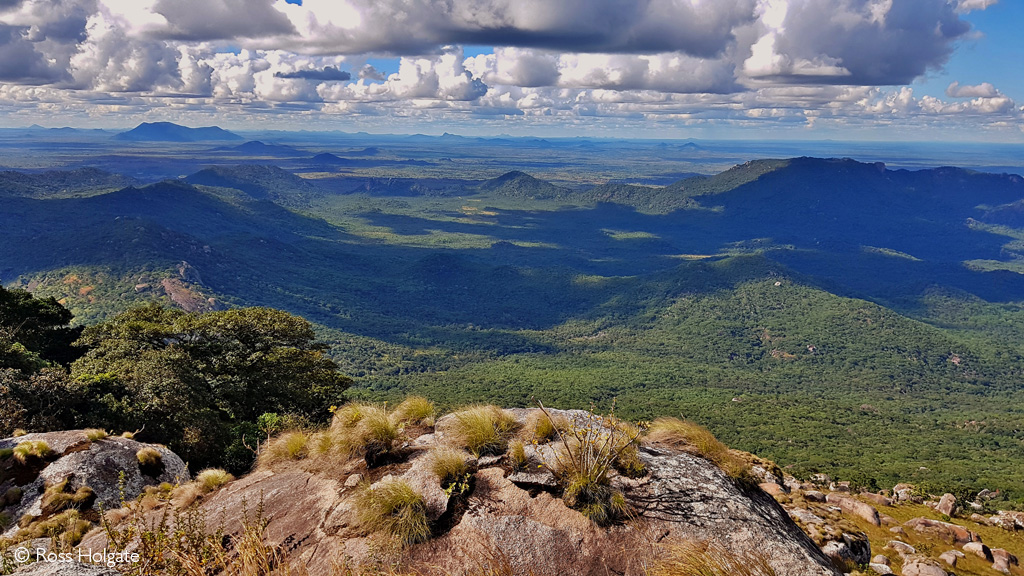

“With its unspoiled forests, a breeding population of leopards and unique bird and butterfly species, Mangochi is a crucial extension of Liwonde. Once the fencing is complete, it will provide extra space for elephants and other wildlife – and it has great potential for adventure tourism,” Dave says excitedly.
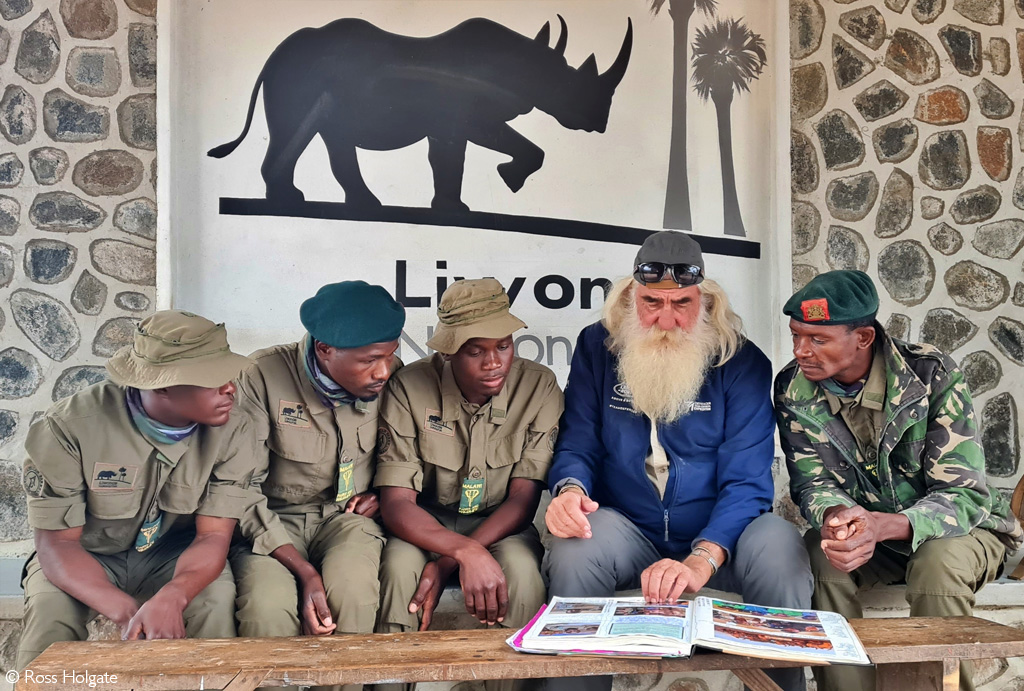
The following morning, as we watch three bull elephants lazily feeding in the gardens of the park’s HQ, Dave comes hurrying towards us, carrying the Africa Parks Scroll of Peace & Goodwill. He’s spent the night thinking carefully about his message of hope for Africa’s wildlife and wild spaces:
“Liwonde is an extraordinary piece of old Africa, with its slow Shire River full of crocs and hippos, and ancient baobabs … Mangochi is a forest wonderland, steeped in history with soaring granite outcrops above steeply wooded slopes and crystal clear streams. Together, they form an incredibly diverse complex that is under significant and increasing pressure – yet we have hope.
The Cambridge dictionary defines ‘Hope’ as wanting something to happen, or to be true, and usually having a good reason to think that it might. In African Parks and the dedicated men and women of the organisation, we have that good reason! Our hope is not naïve, or blind to the challenges and obstacles ahead; but we will persevere and ensure this remarkable place continues to thrive and that the communities are better off for the park’s existence, with dignity and mutual respect.”
It’s a powerful salute to this peaceful place – the poachers’ guns now thankfully silenced – where life still plays out to the rhythms and pace of wild Mama Afrika.
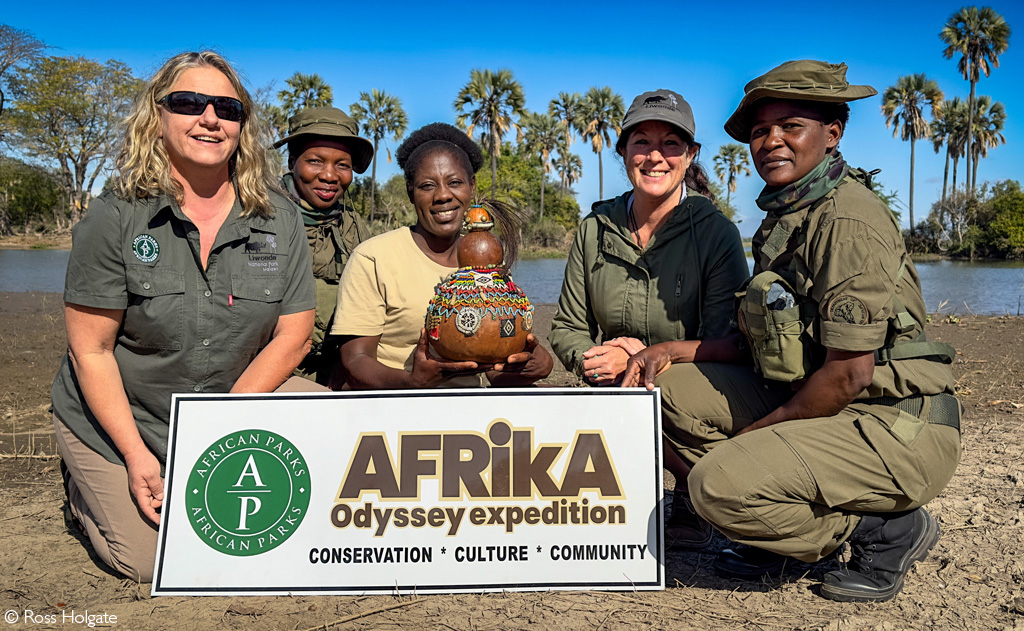
We’ll be ending the Malawian chapter of this Afrika Odyssey expedition at Majete Wildlife Reserve, the place where African Parks’ story began 20 years ago. It’s a bit of a pilgrimage; we’ve been looking forward to it for months, and the excitement is high.
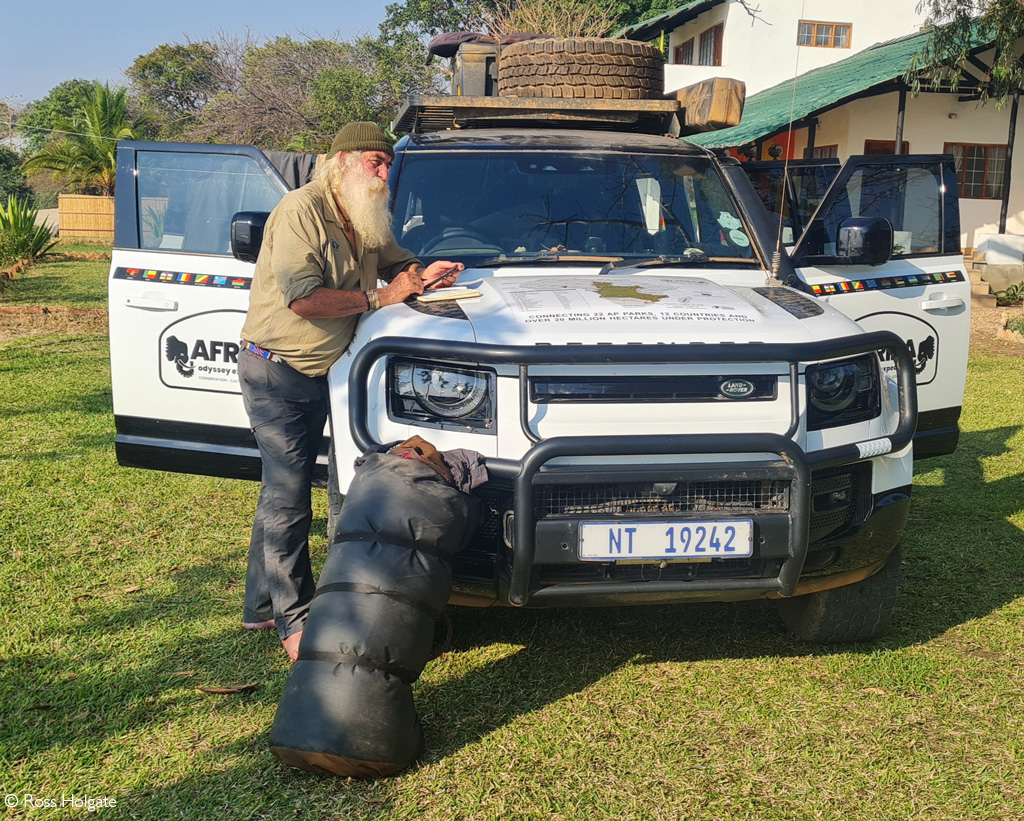
Resources
Liwonde National Park is an exceptional safari destination, revived from the brink of destruction & now a key protected area in Malawi. Read more about Liwonde here.
To comment on this story: Login (or sign up) to our app here - it's a troll-free safe place 🙂.![]()






